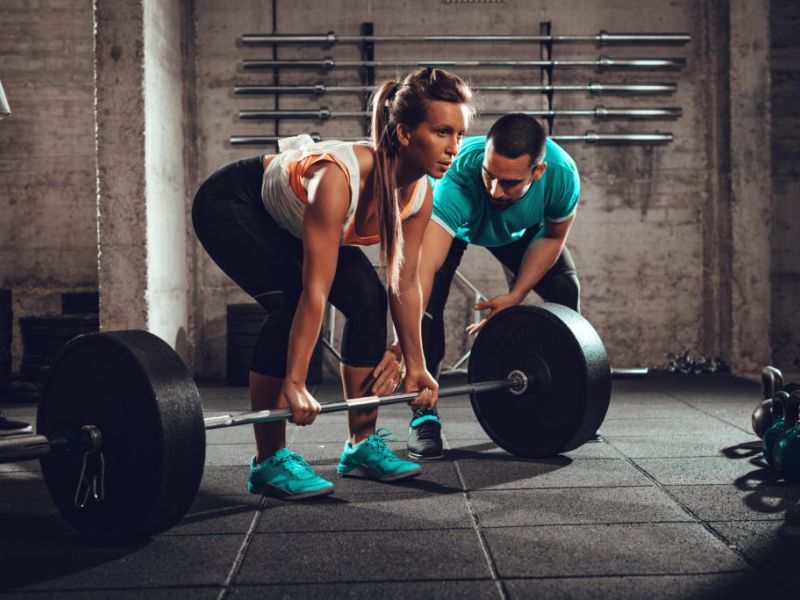
Off-Season Training for Powerlifters: Building Your Base for Future PRs
The thrill of competition is over, the platform lights have dimmed, and your total is in the books. So, what now? For a serious powerlifter, the period after a meet—the off-season—is not a time for rest, but a time for strategic rebuilding. This is where you lay the foundation for future personal records (PRs). A well-structured off-season is the secret weapon of elite lifters, allowing them to address weaknesses, build new muscle, and come back stronger than ever.

The Purpose of the Off-Season
Unlike the specific, high-intensity work of a meet prep cycle, the off-season has different, broader goals:
-
Address Weaknesses: This is the prime time to hammer the weak points that held you back in your last competition.
-
Build Muscle Mass (Hypertrophy): A bigger muscle has a higher potential for strength. The off-season is the best time to focus on adding quality size.
-
Improve Work Capacity: Increasing your ability to handle more training volume will pay dividends when you transition back into a strength block.
-
Mental and Physical Recovery: It provides a much-needed psychological break from heavy singles and the grind of peaking.
Key Components of an Off-Season Program
Your off-season training should look significantly different from your in-season or peaking phases.
1. High Volume, Moderate Intensity
The cornerstone of off-season training is higher volume and lower intensity. This is the optimal environment for hypertrophy.
-
Rep Ranges: Instead of heavy sets of 1-5, you'll live in the 6-15 rep range.
-
Intensity: The weight on the bar will be lighter, typically falling between 60-80% of your 1RM, or an RPE of 6-8. The focus is on quality repetitions and accumulating volume, not on maximal load.
2. Increased Exercise Variation
While the competition lifts are still important, the off-season is the time to introduce more variation to build a more well-rounded base of strength and muscle.
-
Variations of Main Lifts: Instead of only doing competition-style low-bar squats, you might use high-bar squats, front squats, or safety bar squats to target your quads. For bench, you could use a close-grip, wide-grip, or incline press.
-
Focus on Accessory Work: Your accessory and assistance exercises become the main event. This is where you directly attack your weaknesses. If your lockout is weak, you'll be doing a lot of board presses and tricep work. If your deadlift is slow off the floor, deficit pulls and leg presses might be staples.
3. Bodybuilding-Style Training
Think of the off-season as your time to be a "powerbuilder." The goal is to chase the "pump" and create the metabolic stress that drives muscle growth.
-
Unilateral Work: Incorporate single-leg and single-arm exercises like Bulgarian split squats, lunges, and single-arm dumbbell rows. These are excellent for addressing muscle imbalances.
-
Isolation Exercises: Don't be afraid to add exercises like leg extensions, hamstring curls, and lateral raises to directly target and grow smaller muscle groups.
4. GPP (General Physical Preparedness)
GPP refers to your overall fitness. Improving it helps with recovery and work capacity.
-
Conditioning: Introduce some form of low-intensity conditioning 1-2 times per week. This could be pushing a sled, carrying heavy objects (loaded carries), or even going for a brisk walk. As legendary coach Louie Simmons of Westside Barbell advocated, a higher GPP allows you to train harder and recover faster.
A Sample Off-Season Training Split
This is just an example, but it illustrates the principles:
-
Day 1: Upper Body (Volume Bench Focus)
-
Incline Dumbbell Press: 4 sets of 8-12
-
Barbell Rows: 4 sets of 8-10
-
Seated Overhead Press: 3 sets of 10-12
-
Lat Pulldowns: 3 sets of 12-15
-
Tricep Pushdowns & Face Pulls (Superset): 3 sets of 15-20
-
-
Day 2: Lower Body (Volume Squat Focus)
-
High-Bar or Safety Bar Squat: 4 sets of 8
-
Romanian Deadlifts: 4 sets of 10-12
-
Leg Press: 3 sets of 15-20
-
Walking Lunges: 3 sets per leg
-
Ab Wheel Rollouts: 3 sets to failure
-
The off-season is where future champions are built. By shifting your focus from maximal strength to building muscle, addressing weaknesses, and improving your work capacity, you create a stronger, more resilient foundation. Embrace the volume, enjoy the variety, and know that the hard work you put in during the off-season will translate to bigger numbers on the platform when it counts.
What does your off-season training look like? Share your favorite strategies in the comments below!








